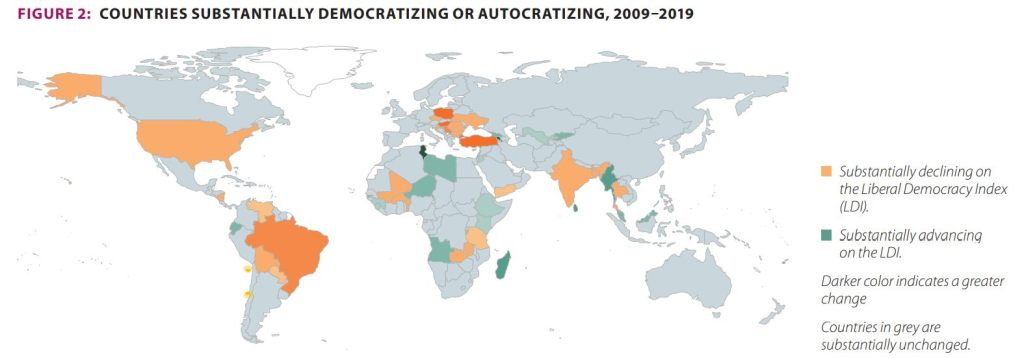
In this diligent work of the V-Dem Institute of the University of Gothenburg, in collaboration with around 3000 country experts, over 28 million pieces of information were compiled, which allow the state of the political systems in the world to be characterized according to 429 indicators. For each country, state and development of its liberal-democratic character can be assessed according to the criteria:
- freedom of elections,
- freedom of civil society,
- uniformity / diversity of the media,
- freedom of teaching and culture and
- presence / absence of censorship.
In sum, the world has become more democratic by around 2000, 2010; after that, however, autocratic and authoritarian elements gained weight in so many countries that the positive development in other countries could no longer compensate for this.
Examples of unfavorable developments are: Hungary, Poland, India (which is particularly important due to its size), Serbia, Turkey, but also – albeit less clearly – the Czech Republic, Thailand, Bangladesh, Venezuela, Nicaragua. The United States is an exception, as Biden’s election can be expected to improve things.
Note that these are changes with respect to the 2009 state. Countries like Poland or the Czech Republic, despite its deterioration, still have a relatively high level of democracy.
On the other hand, there are also positive exponents: Tunisia, Armenia, Gambia, Sri Lanka, Ecuador, Georgia, Malaysia. The special case here is of course Myanmar, where the recent coup has thrown back democratic development.
Annotation:
It seems to me that in us humans, an evolutionary tendency towards the leader-allegiance-paradigm fights with another towards equality, justice, accountability of temporary leaders and power participation of every individual. It is not certain that the latter will always bear the palm of victory. It remains exciting.